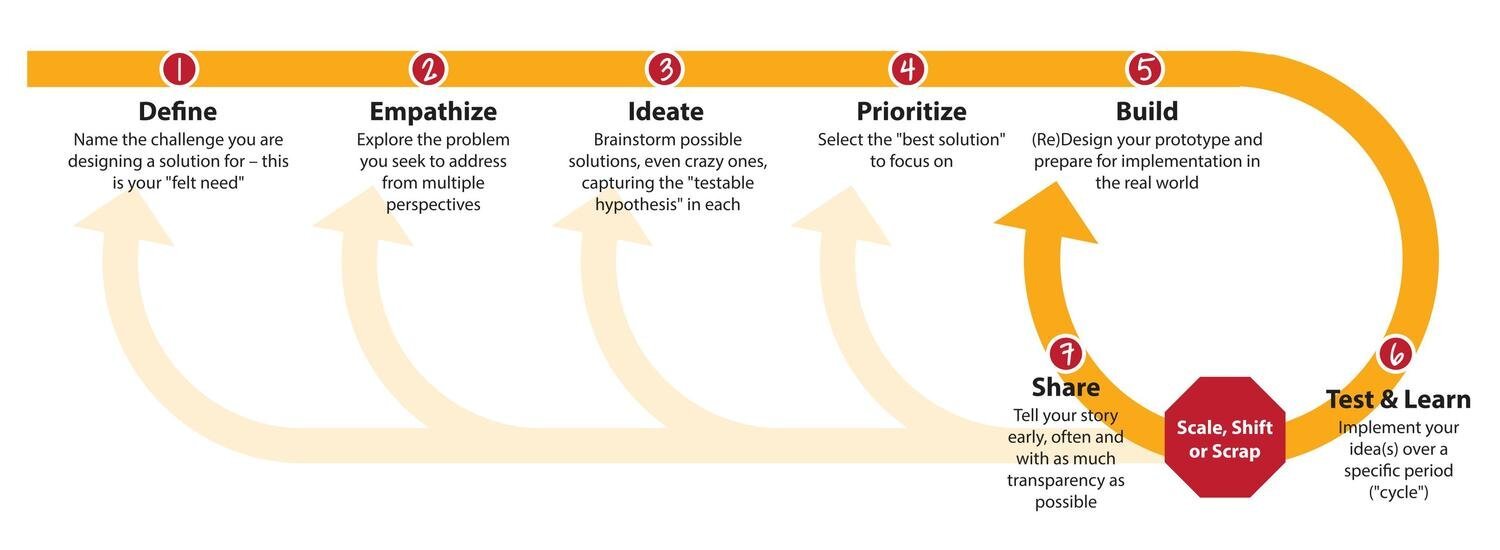Why Design Thinking Can Change Policy
SHORT-CYCLE PROTOTYPING AND ITERATIVE DESIGN IS A PROCESS WE USE FREQUENTLY AT 2REV TO UNLOCK CREATIVITY AND POSSIBILITY.
Do you remember the animated “I’m Just a Bill” video? If you were like me, you probably watched it in school at some point. You likely sat in an uncomfortable, wobbly plastic chair, arranged in traditional rows, while your teacher stood at the front and drew arrows between the three branches of government on a whiteboard that you dutifully copied over into a notebook using color-coded pens. (Okay, maybe that last part was just me.) Since Schoolhouse Rock first released the video - back in 1975 - not much has changed about our legislative process. And yet, so much of the world around us has. The Internet, for one. Innovative technologies, medical advances, and countless ideas that have shaped and molded the world as we know it today.
What if we brought that innovative spirit to policy?
We elect our officials to design and shape policy for us. But how can we stay involved in that process long after we cast our votes? Especially in our current political environment, it’s become clearer to me how important it is for us citizens to be engaged, informed, and action-oriented. But right now it’s hard to know where to start. Consider how traditional stakeholder engagement looks when it comes to having a voice in legislation: politicians publish their contact information online and occasionally host town halls or other special events with a set amount of time for any and all comments. For the most part, this places the onus on the constituent to seek out their representative on an individual basis, and when they do, there’s not much time or space for deep, authentic discussion. In the education space, there are groups that advocate and lobby on behalf of students and educators, but those voices are muddled, their ideas frequently at odds with one another. At the local level, school boards are designed to in part help to bridge the communications gap, but only a little more than half of them provide formal channels for community input. For the average citizen, you still have to know where to look, when to look, and if you’re not a policy wonk, you might have to do extensive independent research to understand what each local, state, and federal regulation might mean for you and the children in your community.
It’s time we revolutionize what it means to create policy and use the approaches, mindsets, and tools that have proven helpful when it comes to rethinking things that felt impossible to rethink (like school). Design thinking is a core part of how we approach change at 2Rev. It allows us to lead with empathy in everything we do, to push up against the entropy of complex systems and break down barriers to change. We need to leverage that same design process in how we craft and implement major policy decisions. Imagine what user-centered policy design could look like: a process by which the community comes together to shape policy, in authentic collaboration with their elected officials, turning the standard top-down approach on its head. Building policies from a place of empathy and teamwork is a chance to level the playing field, a way to develop true ownership and investment in the policies that impact communities. We are excited to integrate these ideas in our work with the Carnegie Corporation, for which we’re launching a two-year national experiment to find and create better, collaboratively-designed solutions to the siloization that holds back our communities as they push toward a new and different future.
I invite you to come on this journey towards user-centered policy design. Think about how you can support your own community to build sustainable solutions together, incorporating the voices and needs of your neighbors. Encourage your local elected officials to welcome all of their constituents not only into the conversation, but into the process as well. Build a culture of empathy for enacting change. Brainstorm and test your prototypes, and scale, shift, or scrap your solution as you learn and reflect on what worked and what didn’t. Share your story far and wide to support those in other communities. Together, we can bring design thinking to the heart of policy.


